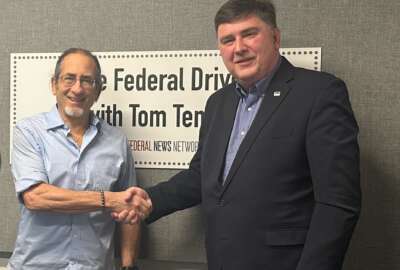Lindenmoyer taps private industry to fulfill NASA’s space transportation needs
Alan Lindenmoyer, program manager in NASA's Commercial Crew and Cargo Program at the Johnson Space Center, spearheaded the effort to use private industry to provide...

When the space shuttle program came to an end in 2011, NASA needed to find an economic way to continue its space research.
It fell to Alan J. Lindenmoyer, the program manager for NASA’s Commercial Crew and Cargo Program, to come up with a solution to this problem.
That’s exactly what he did, by designing and assembling a program that allowed the space agency to contract out its orbital transportation services to private industry.
Now, rather than building its own space vehicles, NASA is using spacecraft built by contractors to carry science experiments and supplies to the International Space Station.
“This really is a dance between the government and private companies, but there was no music written for this dance,” said Paul Wilde, a technical adviser with the Federal Aviation Administration. “It’s a completely new way of doing business. Alan took it from vision to reality.”
For his work in transforming NASA’s space flight program, the Partnership for Public Service recently named Lindenmoyer as one of the finalists for the 2014 Management Excellence Medal. The award honors federal employees who demonstrates superior leadership and management.
Getting to know Alan Lindenmoyer
Federal News Radio asked each of the Sammies finalists five questions about themselves. Here are Alan Lindenmoyer’s responses:
What three words best describe your leadership philosophy?
Integrity, Excellence, Tenacity
What’s the best piece of advice (or words of wisdom) you’ve ever received and who gave it to you?
My father always reminded me to “be humble.” I’ve learned that personal achievements are always the result of teamwork and relationships in one form or another.
Who is your greatest role model and why?
There are many giants in our industry, both public and private, who I respect and admire. However, Nelson Ferragut, my first supervisor and mentor at NASA is my greatest role model. He pushed the state-of-the-art in engineering analysis and I was awestruck by the incredible work being done at NASA under his leadership. His encouragement inspired me to spend an entire career at NASA.
What’s the last thing you read and what’s next on your reading list? I often refer back to “The Innovator’s Dilemma,” a book recommended to me by a venture capital consultant during the formulation of the COTS program. I am looking forward to reading a COTS history report being written by Prof. Harry Lambright of Syracuse University. It will be very interesting to hear his perspective on public policy impacts and the historical significance of our program.
What would be the title of your autobiography and why?
“Vertically Challenged.” I have spent my entire career helping rockets, spacecraft and science payloads lift off beyond Earth’s grip. My goal is to see that challenge extended beyond Earth orbit so that Americans will be exploring deep space and other planets before my work is done. I am also looking forward to see my family soar to new heights as their many adventures lie ahead.
The Management Excellence Medal is just one of the Samuel J. Heyman Service to America Medals (Sammies) presented annually by the Partnership for Public Service. View a photo gallery of all the Sammies nominees.
Copyright © 2025 Federal News Network. All rights reserved. This website is not intended for users located within the European Economic Area.





